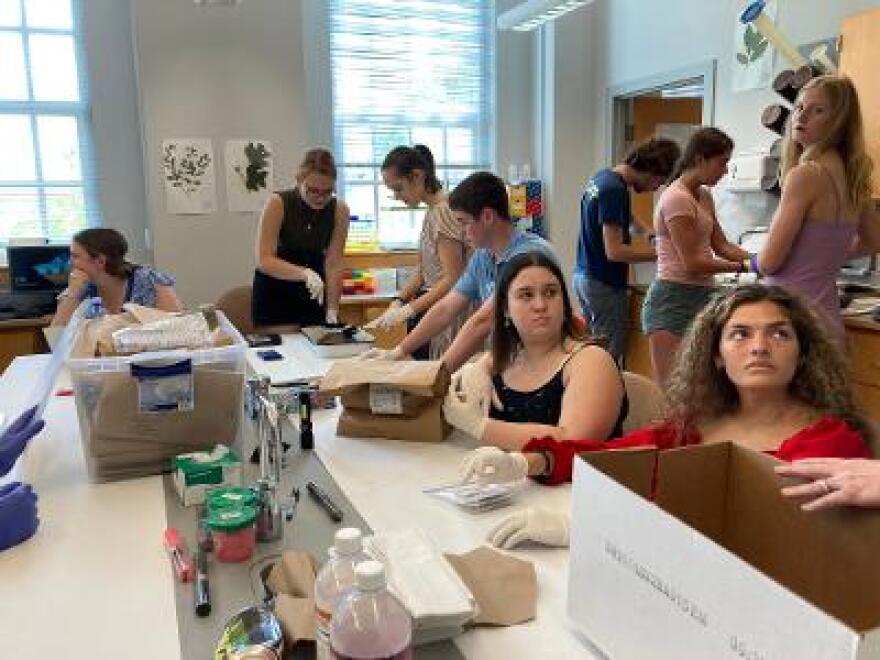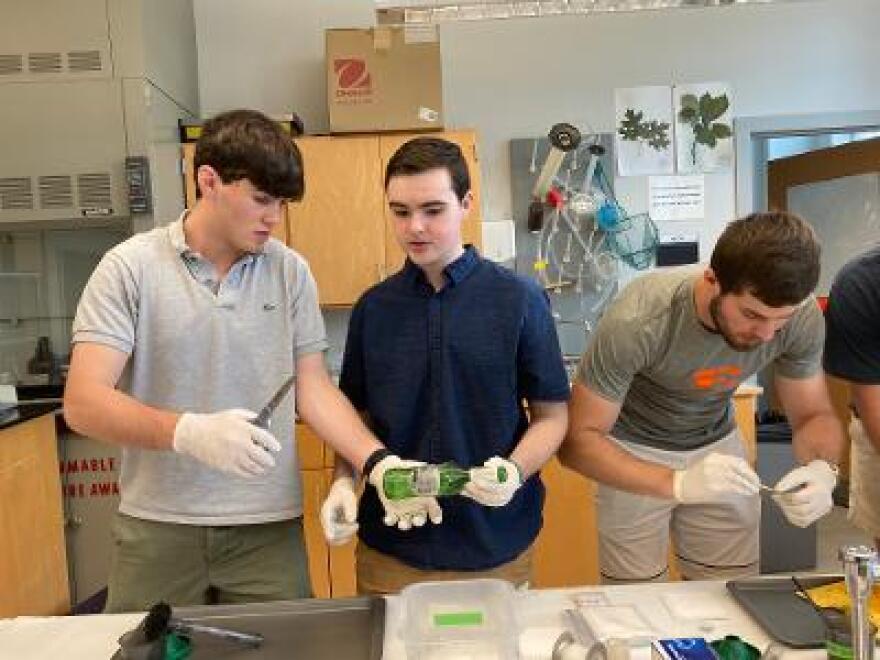Fred LaRiviere is a chemist by training, but he and biologist Fiona Watson have teamed up to solve mock crimes on campus.
During a special month-long session they offer CSI:W&L – a chance for students at Washington and Lee University to learn how science helps cops solve crimes.
“It’s a dangerous place Washington and Lee in the spring," LaRivere jokes. "We had a lab break-in down the hall, a gambling ring upstairs in the attic, and then a kidnapping in an apartment on campus.”
Watson says students learn how real detective operate -- bringing evidence to this large, sunny lab from their pseudo-crime scenes.

“They have two days to go through the crime scene.The first day is an initial walk through," she explains. "They make sketches. They take measurements. They collect all of the samples, and then they come back to the lab and they log everything, and then the next day they get to go back and dust for fingerprints at the location.”
Powders are analyzed fibers and hairs are analyzed. Blood samples yield DNA. Plaster molds are made from shoe prints, and mock updates arrive from police in the field.
“Each week we bring in new evidence, and if they’re getting a little close too quick we’ll mix things up and give them some challenges,” LaRiviere says.
Real experts from the F.B.I. and the local police force drop by to share tips, and lawyers discuss their take on evidence and junk science.
“TV makes it look easy and in real life it’s not so easy," he explains. "It takes much longer than a one-hour episode. And also you often hear people on CSI saying, ‘It’s a match,’ when really it’s a probability that this piece of evidence might be linked to a suspect.“
After 40 hours of lecture and 48 hours of lab time students like Hailey Neaman have a new appreciation for police work.
“It’s definitely not as seen on TV!" she says. "The processes are a lot more delicate and detailed than you’d think they’d be.”
Many classes at Washington & Lee are small, but this one draws a crowd with about 30 students signing up. Still, there’s a fair amount of one on one instruction. Here, for example, Watson offers advice on handling a crushed beer can.
“If they crushed it there might be a really nice fingerprint, because they’ve actually put pressure on there," she tells him. "Okay, yeah, that’s a really good point,” He replies.
Some students admit they signed up to fulfill a university requirement that they take a laboratory science course, but halfway through the program, everyone seems pleased with their choice.
“It’s very hands on. I knew there would be lab classes, but I didn’t realize it would be as detailed as it has been, so that’s a nice surprise,” says Jack Pugliese.
“I’ve learned a lot about evidence processing and when the FBI was here it was really cool to hear their real experience. It’s not as easy as it looks on TV," adds Claire Gilreath.
“I think it’s a cool way to learn about science. I’ve seen it on TV but never actually understood,” George Marable concludes.
And their professors say it’s been a learning experience for them too.
“Before we started this course we took a one-week intensive forensic science course at Williams College," says LaRiviere. "Most of the people who go there are educators who want to apply it to a specific course,” Watson adds.
Based on attendance at that class alone, the two conclude CSI courses are spreading to colleges and universities nationwide.


